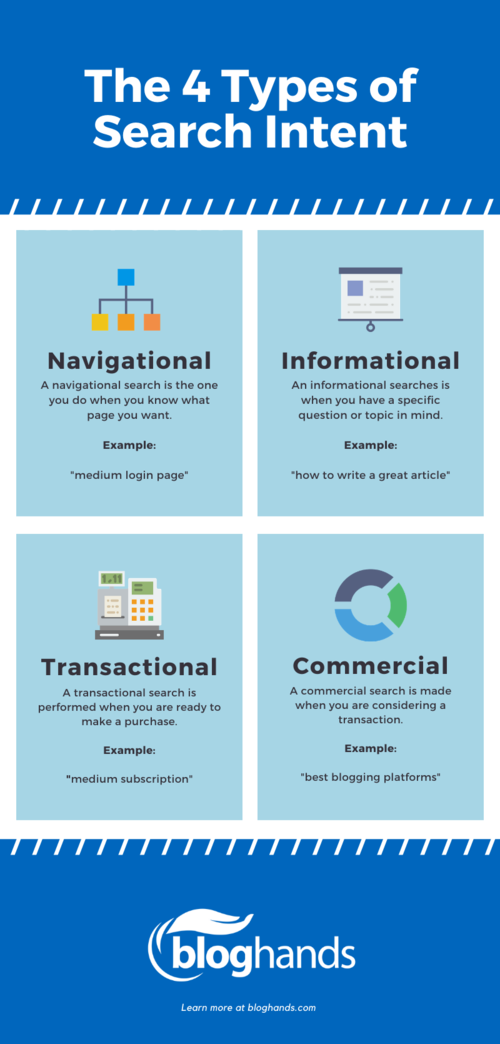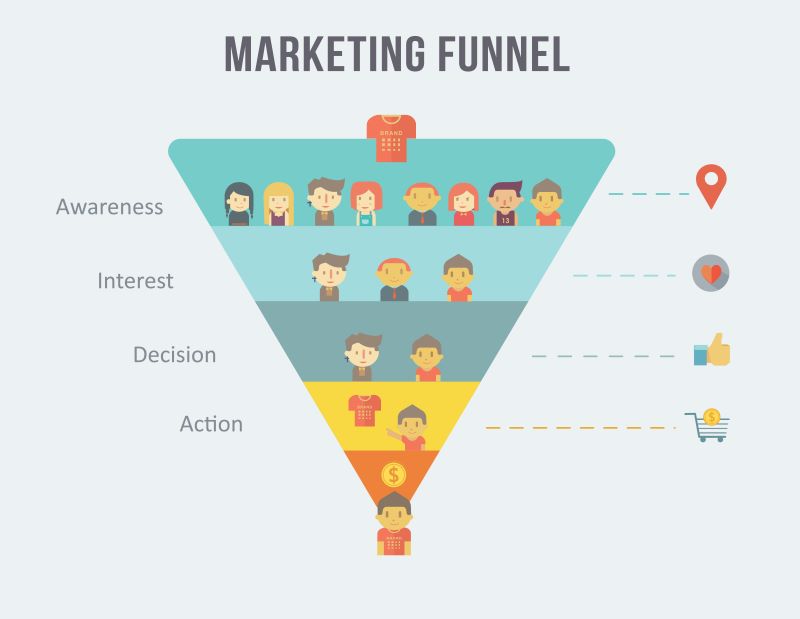Uncovering the secrets behind user search intent: a deep dive into understanding what drives users to search for information online.

Image courtesy of via DALL-E 3
Table of Contents
Welcome to our guide on understanding search intent and user needs. Have you ever wondered why people search for things on the internet? Well, that’s what we’re going to explore together in this article. We’ll help you figure out what users are looking for when they search for something online so that you can create better content that meets their needs. Let’s dive in and learn more about search intent!
What is Search Intent?
Search intent is all about understanding what a person wants to find or do when they look something up on the internet. Imagine you’re searching for a recipe online, your intent is to find the instructions and ingredients to make a delicious meal. That’s search intent in action!
Why It’s Important
Knowing search intent is crucial because it helps us create better content that matches what users are looking for. By understanding what people want when they search, we can make sure to provide them with the information they need. It’s like being a helpful guide on the internet!
Types of Search Intent
Understanding the different types of search intent can help us figure out what people are looking for online. Let’s break it down into simple terms so that you can easily grasp the concept.
Informational Intent
When someone has an informational intent, they are searching to learn something. This could be anything from looking up facts to finding how-to guides. For example, searching for “how to tie a tie” indicates an informational intent.
Navigational Intent
Navigational intent comes into play when someone is trying to find a specific website or page. For instance, searching for “YouTube” or “best chocolate chip cookie recipe” shows navigational intent.
Transactional Intent
Transactional intent is all about wanting to buy something. It includes searches for online stores, product prices, or specific items like “buy iPhone 12 Pro.” When someone has a transactional intent, they are ready to make a purchase.
Commercial Investigation
Commercial investigation is when someone is exploring options before making a purchase. This could involve looking for reviews, comparisons, or in-depth analysis of products or services. For instance, searching for “best laptop for gaming” indicates a commercial investigation intent.
Identifying Search Intent
Understanding search intent is crucial in creating content that resonates with users. By identifying what users are looking for when they perform a search query, you can tailor your content to meet their needs effectively. Here, we will explore how to pinpoint search intent behind user queries.
Look at the Query
When analyzing a search query, pay attention to the specific words used by the user. These words often provide clues about the intent behind the search. For example, phrases like “best tips,” “how to,” or “reviews” indicate informational intent, while words like “buy,” “discount,” or “free shipping” suggest transactional intent.
Analyzing Search Results
Another way to identify search intent is by examining the search results themselves. Look at the type of content that appears on the first page of search results. If you see mostly product listings, it is likely a transactional intent. On the other hand, if the results include informational articles or guides, the search intent is probably informational.
Tools to Understand Search Intent
Google Search Console is a tool that can help you understand what people are searching for to find your website. It provides valuable data on the keywords people use to reach your site, as well as information on how your pages perform in search results. By analyzing this data, you can get insights into what your audience is looking for and tailor your content accordingly.

Image courtesy of www.singlegrain.com via Google Images
Keyword Research Tools
Keyword research tools like SEMrush or Ahrefs can be incredibly useful in understanding search intent. These tools allow you to see what people are searching for, how often they’re searching for it, and even what your competitors are ranking for. By conducting keyword research, you can uncover valuable insights that can help you create content that matches what users are looking for.
Creating Content for Different Intents
In order to create successful content that resonates with users, it is essential to tailor your approach based on the different intents behind their searches. By understanding the diverse needs users have when they go online, you can develop content strategies that address their specific requirements. Let’s delve into how you can create content that caters to various search intents.
Content for Informational Intent
When users are seeking information, they are looking to learn something new or find answers to their questions. To cater to informational intent, focus on creating comprehensive articles, guides, and educational content that provide valuable insights and knowledge. By addressing frequently asked questions and offering in-depth explanations, you can establish your website as a reliable source of information.
Content for Navigational Intent
For users with navigational intent, the goal is to find a specific website or page. To accommodate this intent, ensure that your website has user-friendly navigation features and clear calls-to-action. Make it easy for users to locate the content they are looking for by organizing your site in a logical and intuitive manner. Implementing a search function and categorizing your content can also enhance the navigational experience.
Content for Transactional Intent
Transactional intent indicates that users are ready to make a purchase. To capture these potential customers, create compelling product pages, sales content, and special offers. Highlight the benefits of your products or services, showcase customer reviews, and provide clear instructions on how to complete a transaction. By optimizing your content for conversion, you can drive sales and boost your revenue.
Content for Commercial Investigation
Users displaying commercial investigation intent are in the early stages of the buying process, evaluating their options before making a decision. To support these users, focus on creating reviews, comparisons, and in-depth analysis pages. Offer detailed insights into different products or services, present pros and cons, and help users make informed choices. By providing valuable information and aiding in the decision-making process, you can guide users towards a purchase.
Measuring Success
After creating content that aligns with user needs and search intent, it’s crucial to measure the success of your efforts. By analyzing data and feedback, you can determine if your content is effectively meeting the needs of your audience.

Image courtesy of bloghands.com via Google Images
Using Analytics Tools
Analytics tools like Google Analytics provide valuable insights into how users interact with your content. You can track metrics such as page views, bounce rate, time on page, and conversion rates to understand the performance of your content. By analyzing this data, you can identify which pieces of content are resonating with your audience and which ones may need improvement.
User Feedback
In addition to analytics tools, gathering feedback directly from users is essential in measuring the success of your content. Encourage users to leave comments, reviews, or ratings on your website to understand their perspectives. Pay attention to any trends or common themes in the feedback to identify areas for improvement or optimization. User feedback can provide valuable insights into whether your content is effectively meeting their needs.
Case Studies
In this section, we will explore a couple of real-life examples where understanding search intent led to significant improvements in online content.
Example One
Imagine a website that sells art supplies. By analyzing user queries and search intent, the website owner noticed a pattern of informational intent keywords related to art techniques and tutorials. Understanding that users were looking to learn more about art, the website created a dedicated section with step-by-step guides, video tutorials, and tips from professional artists. As a result, the website saw a noticeable increase in traffic as more users visited to learn and improve their artistic skills. This shows how aligning content with informational intent can attract and engage a relevant audience.
Example Two
Now, let’s consider an online fashion store. Through keyword research and analyzing search intent, the store identified a strong transactional intent among users looking for specific clothing items and deals. In response, the store optimized its product pages with clear descriptions, high-quality images, and compelling offers. By understanding that users were ready to make a purchase, the store also implemented a user-friendly checkout process and personalized recommendations. Consequently, the store witnessed a significant boost in sales and conversion rates, demonstrating the power of catering to transactional intent effectively.
Summary
In this article, we delved into the fascinating world of search intent and how understanding user needs can significantly impact content creation. By grasping what people are seeking online, one can tailor content to meet those specific requirements effectively.

Image courtesy of www.clickcease.com via Google Images
Main Points:
Search intent is essentially what a person aims to find or accomplish when they search for something on the internet. Recognizing this intention is crucial in creating meaningful and relevant content that resonates with users.
We explored different types of search intent, including:
- Informational Intent: When users wish to learn or gather information.
- Navigational Intent: When users seek to arrive at a specific website or page.
- Transactional Intent: When users intend to make a purchase.
- Commercial Investigation: When users are in the research phase before making a purchase.
We discussed how to identify search intent through analyzing user queries and assessing search results. Tools like Google Search Console and keyword research tools can also aid in understanding user needs.
Creating content tailored to different search intents is vital. Whether it’s informational articles, user-friendly navigation for navigational intent, product pages for transactional intent, or in-depth analysis for commercial investigation, aligning content with user needs is key.
Measuring success involves utilizing analytics tools like Google Analytics and gathering user feedback to gauge if the content is effectively meeting users’ needs.
Case studies highlighted how understanding search intent led to positive outcomes for content performance. Whether it’s boosting website traffic by catering to informational intent or increasing sales through transactional intent, the benefits of aligning content with user needs are evident.
Overall, understanding search intent is crucial for creating content that resonates with users, ultimately leading to better engagement and improved outcomes.
Want to turn these SEO insights into real results? Seorocket is an all-in-one AI SEO solution that uses the power of AI to analyze your competition and craft high-ranking content.
Seorocket offers a suite of powerful tools, including a Keyword Researcher to find the most profitable keywords, an AI Writer to generate unique and Google-friendly content, and an Automatic Publisher to schedule and publish your content directly to your website. Plus, you’ll get real-time performance tracking so you can see exactly what’s working and make adjustments as needed.
Stop just reading about SEO – take action with Seorocket and skyrocket your search rankings today. Sign up for a free trial and see the difference Seorocket can make for your website!
FAQs
What if I can’t figure out the search intent?
If you’re having trouble figuring out what a user wants when they search, don’t worry! Sometimes search intent can be tricky to decipher. One tip is to try different approaches and see what works best. You can experiment with different types of content and see which ones resonate with your audience. Another idea is to look at the search results for clues. By analyzing what comes up when you search for the same terms, you might get a better sense of what users are looking for.
Can search intent change over time?
Yes, search intent can definitely change over time. People’s needs and interests evolve, and so does the way they search for information online. That’s why it’s crucial to regularly revisit and update your content to ensure it still matches what users are looking for. By staying up-to-date with the latest trends and user behavior, you can adjust your content strategy to meet changing search intents.







